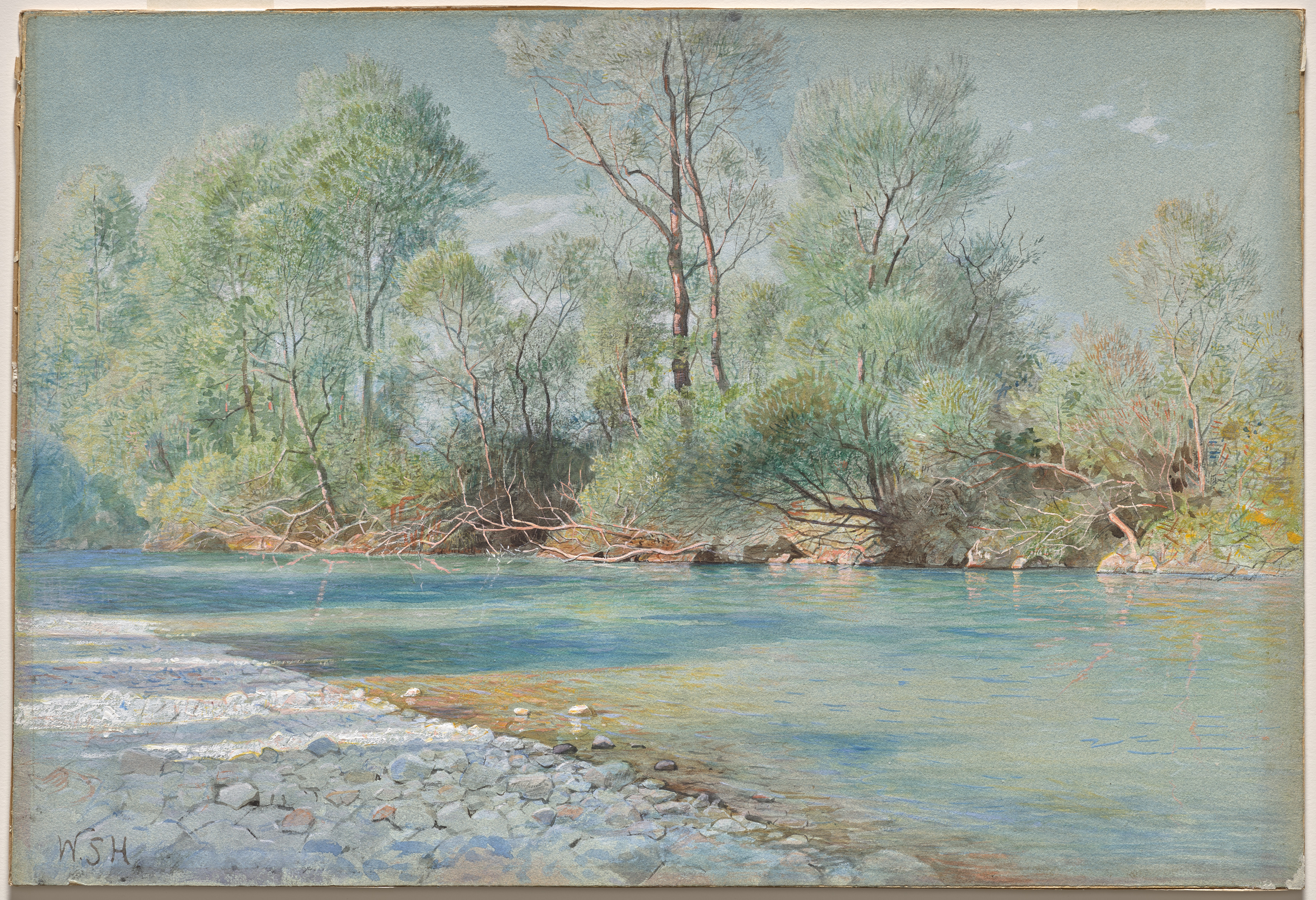The Cleveland Museum of Art
Collection Online as of April 24, 2024

Traunstein River on the Road to Empfig, Bavaria
c. 1893–96
(American, 1835–1900)
Sheet: 38.3 x 56.5 cm (15 1/16 x 22 1/4 in.); Mounted, primary: 38.3 x 56.5 x 0.2 cm (15 1/16 x 22 1/4 x 1/16 in.)
Location: not on view
Description
In this watercolor, William Stanley Haseltine portrayed the calm shore of the Traunstein River, Bavaria, on a summer afternoon. A member of the Hudson River School and a practitioner of Luminism, Haseltine focused on atmosphere and reflection rather than a grand vista. His transparent washes and areas of opaque watercolor over blue paper create the effect of light skipping across the water.- Haseltine used warm, high key colors to paint this calm section of the Traunstein River with a rocky shore in the foreground and a bank overgrown with shrubs and trees on the opposite side. Pure white paint thickly scumbled across the foreground rocks creates glaring reflections of sunlight between shadows cast by lush tree canopies; altogether the scene evokes a late afternoon sun on a warm summer day.
Painted in transparent and opaque colors, the technique included point-of-brush work and admixtures of white which often produced applications resembling pastel. Haseltine’s choice of a bright blue paper introduces a potent chromatic tool. Transparent washes of warm hues of green, blue, and yellow interact synergistically with the blue paper tone to amplify an already vibrant palette. Juxtaposing complementary colors of opaque pale pink and pale orange with the bright blue (paper) enhances the punchy quality of the highlights used to denote tree branches and trunks on the opposite bank.
Paper evaluation is hindered by the sheet’s overall mounted condition, but it is evident that the watercolor is supported by a high-quality blue paper with a slightly to moderately rugged surface texture. The sheet appears to be moderately thick and is likely a variety of wove paper. Individual blue fibers, visible with magnification, indicate the paper was made from blue rags, called self-colored, yet the intensity and uniformity of the blue color also points to the use of a secondary blue dye or pigment added to the paper pulp (before sheet formation). - By descent in the family of the artist, until 19921992(Hirschl & Adler Galleries, New York, NY)1992–?Private Collection, Paris, 1992–??–2018(Menconi & Schoelkopf, New York, NY), sold to The Cleveland Museum of Art, Cleveland, OHJune 4, 2018–The Cleveland Museum of Art, Cleveland, OH
- Hirschl & Adler Galleries, Willian Stanley Haseltine (1835-1900)/ Herbert Haseltine (1877-1972), New York, 1992 p. 17, 21Peters, Emily and Salsbury, Britany. “Acquisitions 2018: Prints and Drawings.” Cleveland Art: Cleveland Museum of Art Members Magazine vol. 59, no. 2 (March/April 2019): 20-23. Reproduced: P. 21; Mentioned: P. 20, 21.
- {{cite web|title=Traunstein River on the Road to Empfig, Bavaria|url=false|author=William Stanley Haseltine|year=c. 1893–96|access-date=24 April 2024|publisher=Cleveland Museum of Art}}
Source URL:
https://www.clevelandart.org/art/2018.32